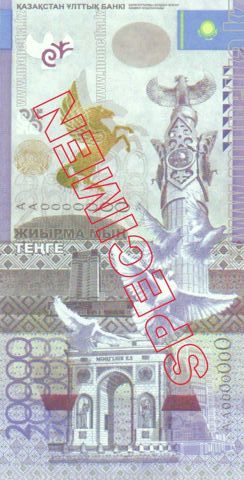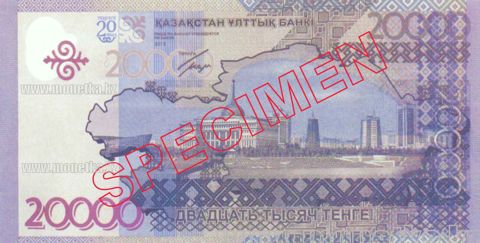The US 1890 Small Seal Grand Watermelon 1000 dollar note already held the record of most expensive banknote ever sold at an auction. But now this one of a kind note smashed its own record. It sold in 2006 for a record $2,225,000 but last night lot 17127 at Heritage Auctions sold for a whopping $3,290,000!
This note is signed by W.S. Rosecrans and E. H. Nebeker. This is the final iteration of the "Grand Watermelon" design. The note's nickname has been derived from the resemblance of the three large zeros on the back to watermelons. It is the only small seal Grand Watermelon of this type outside of government hands.
 The European Central Bank (ECB) has presented the new 10 euro note, the second note in the new Europa series. A new design with some minor changes, updated security features which we already saw in the new 5 euro issued last year and with a new language: cyrillic. I don't know about you but I like the new notes! The design and theme is just the boring and safe standard we've come to know and love/hate, but I really like the slightly different colour they've chosen.
The European Central Bank (ECB) has presented the new 10 euro note, the second note in the new Europa series. A new design with some minor changes, updated security features which we already saw in the new 5 euro issued last year and with a new language: cyrillic. I don't know about you but I like the new notes! The design and theme is just the boring and safe standard we've come to know and love/hate, but I really like the slightly different colour they've chosen.
The new 10 euro notes will be officially issued from 23 September 2014. You can find a video with the new security features after the click below the images.
>> Press kit
Read More
 Dutch banknote printer Royal Joh. Enschedé has been saved from bankruptcy by signing an agreement with investment firm Nimbus. Nimbus will get 95% of the shares of the company while the remaining 5% will remain with the Enschedé family (Joh. Enschedé is among the oldest family businesses in The Netherlands).
Dutch banknote printer Royal Joh. Enschedé has been saved from bankruptcy by signing an agreement with investment firm Nimbus. Nimbus will get 95% of the shares of the company while the remaining 5% will remain with the Enschedé family (Joh. Enschedé is among the oldest family businesses in The Netherlands).
Joh. Enschedé got into trouble last year when a large order for the printing of 450 million German 10 euro notes was postponed at the request of the European Central Bank. Because of this the company immediately had to look for new orders and as a result 65 employees were fired.
Joh. Enschedé prints euro banknotes for several countries, all the dutch stamps and other security prints. The company was founded in 1703. On the euro notes you can identify the notes printed by Joh. Enschedé by looking at the printer code which should start with a G.
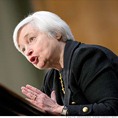
 Janet Yellen has been confirmed by the US Senate as the next chairman of the Federal Reserve. From 1 February 2014 she will be the first woman who will hold this position.
Janet Yellen has been confirmed by the US Senate as the next chairman of the Federal Reserve. From 1 February 2014 she will be the first woman who will hold this position.
The Federal Reserve is the central bank of the United States who is reponsible, amongst many other things, for the printing of the US dollars. The shareholders of the Fed are the 12 banks from the Federal Reserve Districts. On the front of every dollar note you can find the letter and corresponding number of the District bank who issued that particular note.
- Federal Reserve Bank of Boston A 1
- Federal Reserve Bank of New York B 2
- Federal Reserve Bank of Philadelphia C 3
- Federal Reserve Bank of Cleveland D 4
- Federal Reserve Bank of Richmond E 5
- Federal Reserve Bank of Atlanta F 6
- Federal Reserve Bank of Chicago G 7
- Federal Reserve Bank of St Louis H 8
- Federal Reserve Bank of Minneapolis I 9
- Federal Reserve Bank of Kansas City J 10
- Federal Reserve Bank of Dallas K 11
- Federal Reserve Bank of San Francisco L 12
Image from Onedollarbill.org.

 The Chinese Banknote Printing & Minting Corporation, which is responsible for the printing of the Chinse yuan notes, has put out an order to the Dutch company IAI Systems for a system which will allow the MicroPerf security feature to be added to banknotes. This feature is already used on Swiss, Russian and Romanian banknotes.
The Chinese Banknote Printing & Minting Corporation, which is responsible for the printing of the Chinse yuan notes, has put out an order to the Dutch company IAI Systems for a system which will allow the MicroPerf security feature to be added to banknotes. This feature is already used on Swiss, Russian and Romanian banknotes.
If this means that yuan banknotes will also get MicroPerf in the future is, of course, unknown at this time.
 Treasury Minister Philip Ozouf of the island of Jersey has announced that the British Crown dependency will not follow the United Kingdom when they change to polymer banknotes in 2016.
Treasury Minister Philip Ozouf of the island of Jersey has announced that the British Crown dependency will not follow the United Kingdom when they change to polymer banknotes in 2016.
He did however say there are no immediate plans to change Jersey's money, not ruling out a possible polymer future.
 The Bangko Sentral ng Pilipinas (BSP: the Central Bank of the Philippines) will demonetize the old series of banknotes according to a news report from the Manilla Bulletin:
The Bangko Sentral ng Pilipinas (BSP: the Central Bank of the Philippines) will demonetize the old series of banknotes according to a news report from the Manilla Bulletin:
The "old" banknotes called "New Design Series (NDS)" by the Bangko Sentral ng Pilipinas (BSP) will become collectors’ money or currency by 2015. The BSP will stop the printing of NDS this first quarter, finally, and will only produce the "New Generation Currency (NGC)" that the public was first introduced to in December 2010.
For three years, the old and new banknotes were co-circulated. In the next two to three months, however, the NDS notes bearing the 2014 stamp will be considered limited edition as the banknotes series will be printed for the last time. BSP Deputy Governor Diwa C. Guinigundo said they will make the call demonetizing the NDS banknotes later this year. After the announcement, the BSP will give the public one year as transition period to spend the old banknotes. By 2016, only the six denominated NGC banknotes – the 20-piso, 50-piso, 100-piso, 200-piso, 500-piso and the 1,000-piso – will be recognized as the country’s legal tender.
The soon to be demonetized 5 peso note from the New Design Series:
 Today Latvia has joined the Eurozone. It is the 18th country to do so. It's own currency, the Lat, will cease to be legal tender on 15 January 2014. With this step the world not only loses a currency but also the third most valuable banknote: the 500 Lats which is worth around $982. Only the 10,000 Singapore dollar note ($7,908) and 1,000 Swiss franc note ($1,123) are currently worth more. Now the €500 banknote is the world's third most valuable banknote (about $688).
Today Latvia has joined the Eurozone. It is the 18th country to do so. It's own currency, the Lat, will cease to be legal tender on 15 January 2014. With this step the world not only loses a currency but also the third most valuable banknote: the 500 Lats which is worth around $982. Only the 10,000 Singapore dollar note ($7,908) and 1,000 Swiss franc note ($1,123) are currently worth more. Now the €500 banknote is the world's third most valuable banknote (about $688).
Latvia will eventually print it's 'own' euro banknotes. This is what the official changeover site has to say on that subject:
To meet Latvia’s needs for euro banknotes, an open competition among the printing works approved by the European Central Bank will be organized in collaboration with other national central banks. In the first year of euro changeover, we will borrow from other euro area countries.
It's unknown at this moment what the national identification letter (the first character of each note's serial number) will be on the euro notes from Latvia. Right now the letters A, B, C, I, O and Q are available.
 After the recent introduction of the new 10 dinar note Tunisia will issue a new banknote in the first quarter of 2014. This time the note will have a denomination of 5 dinar.
After the recent introduction of the new 10 dinar note Tunisia will issue a new banknote in the first quarter of 2014. This time the note will have a denomination of 5 dinar.
Not much more is known at this moment since the only source for this news are the remarks made by the vice-gouverneur of the Central Bank of Tunisia, mr. Mohamed Rekik.
Via
 Interesting news from the small kingdom Bhutan: the low denominations of 1 and 10 ngultrum will no longer be printed by De la Rue on paper but by printer Giesecke and Devrient on a paper/polymer substrate made by Louisenthal. Hybrid banknotes have a cotton core that gives the substrate the security benefits of traditional banknotes. This is surrounded by a polyester laminate that increases the durability of the banknote even under extreme climatic conditions. Bhutan's 1 and 10 ngultrum banknotes in particular are subjected to high levels of wear and, up to now, had to be regularly replaced.
Interesting news from the small kingdom Bhutan: the low denominations of 1 and 10 ngultrum will no longer be printed by De la Rue on paper but by printer Giesecke and Devrient on a paper/polymer substrate made by Louisenthal. Hybrid banknotes have a cotton core that gives the substrate the security benefits of traditional banknotes. This is surrounded by a polyester laminate that increases the durability of the banknote even under extreme climatic conditions. Bhutan's 1 and 10 ngultrum banknotes in particular are subjected to high levels of wear and, up to now, had to be regularly replaced.
Statistically, Bhutan is one of the poorest nations on Earth, although its average income per capita is higher than in neighboring India. Jigme Singye Wangchuk, King of Bhutan since 2006 and pictured on the front of the 10 ngultrum banknote, has coined the term "gross national happiness" to describe the cultural objective and he formulated this as an important objective of Bhutan's economic policy. In line with this, Buddhist symbols of happiness also adorn the new banknotes. Alongside Ecuador, Bhutan is one of the few countries that has not set out a growth-oriented economic model in its constitution.
 From the website of the Bank of England regarding the future choice of characters on new banknotes:
From the website of the Bank of England regarding the future choice of characters on new banknotes:
On 24 July 2013, the Bank of England announced that it would review the process and criteria for selecting characters to appear on its banknotes. The aim was to establish a set of principles to guide the choice of historical characters that would ensure the Bank’s choices commanded broad respect and legitimacy and to establish a process for choosing historical characters that would, and would be seen to, ensure the delivery of those principles.
Read More
 An article on Chapter97.org, which links to an interview with chief of the Belarusian National Bank Nadzezhda Yermakova on Zviazda.by, mentions that Belarus won't see a redenomination next year.
An article on Chapter97.org, which links to an interview with chief of the Belarusian National Bank Nadzezhda Yermakova on Zviazda.by, mentions that Belarus won't see a redenomination next year.
"We plan a redenomination, but it's too early to speak about the date,” Nadzezhda Yermakova noted. The National Bank chief said the inflation rate of under 10% was needed to carry out redenomination, otherwise large denomination banknotes would appear again due to the price growth.
As the inflation rate is expected to be 11% the next year, it's too early to discuss the redenomination in 2014, Nadzezhda Yermakova says. “We have new banknotes, we already printed them. But it's too early to issue them,” the National Bank chief noted.
Lukashenka also said earlier that banknotes for the redenomination had been printed.
“Redenomination is not a problem. It's a technical issue. We have printed banknotes. They have been in warehouses for some years, but it is more important for us to have stability on the currency market,” he said at a press conference for Russian media in Minsk. “It's better to carry it [redenomination] out when the situation on the currency market becomes more stable."
So perhaps we will see new Belarusian banknotes in 2015?
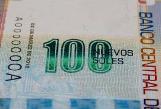
 The Central Bank of Peru (Banco Central de Reserva del Perú) has issued a press release on the introduction of a revised 100 nuevo sole note.
The Central Bank of Peru (Banco Central de Reserva del Perú) has issued a press release on the introduction of a revised 100 nuevo sole note.
The note has been issued on 18 December 2013 and has the same design as the previous issue but with the addition of a vertical number 100 in SPARK ink (developed by the company SICPA).
 An article on Tengrinews.kz mentions that the introduction of the already printed new 20,000 tenge note has been postponed by the National Bank of Kazakhstan. The reason for this decision is the fear for high inflation. At this moment the 10,000 tenge is the highest denomination in the country (this note was Banknote of the Year 2011 by the way).
An article on Tengrinews.kz mentions that the introduction of the already printed new 20,000 tenge note has been postponed by the National Bank of Kazakhstan. The reason for this decision is the fear for high inflation. At this moment the 10,000 tenge is the highest denomination in the country (this note was Banknote of the Year 2011 by the way).
The National Bank has stated that they don't rule out the introduction of the 20,000 tenge note in the future but they don't expect it to be issued very soon.
Update 21 November 2015: there is a new discussion about introducing this note after all.
« Vorige Pagina |
Toon berichten 706-720 van 937 |
Volgende Pagina »
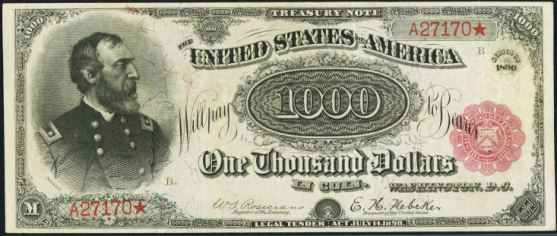

 The
The 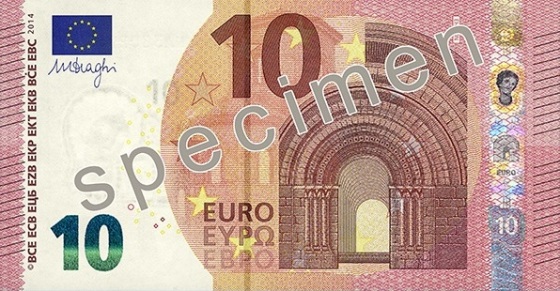
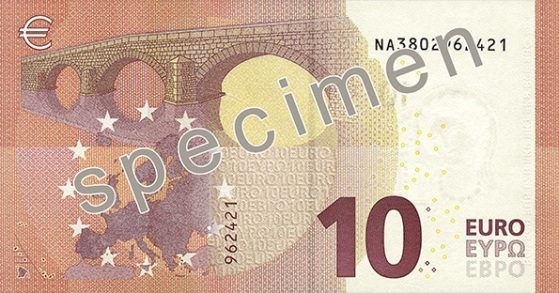
 Dutch banknote printer
Dutch banknote printer 
 Janet Yellen has been
Janet Yellen has been 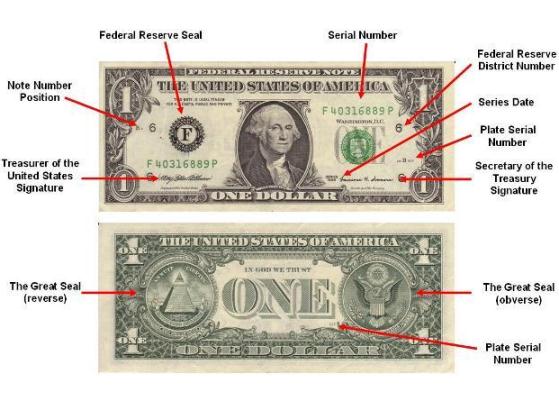

 The
The  Treasury Minister Philip Ozouf of the island of
Treasury Minister Philip Ozouf of the island of 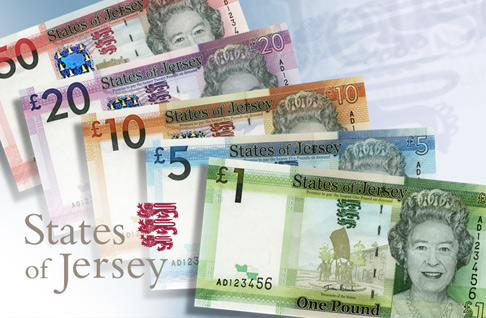
 The
The 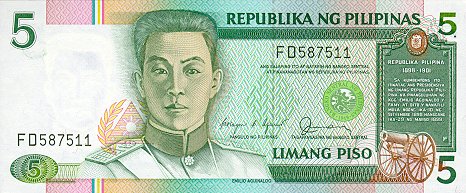
 The
The  Today Latvia has joined the Eurozone. It is the 18th country to do so. It's own currency, the Lat, will cease to be legal tender on 15 January 2014. With this step the world not only loses a currency but also the third most valuable banknote: the 500 Lats which
Today Latvia has joined the Eurozone. It is the 18th country to do so. It's own currency, the Lat, will cease to be legal tender on 15 January 2014. With this step the world not only loses a currency but also the third most valuable banknote: the 500 Lats which  After the
After the  Interesting news from the small kingdom Bhutan: the low denominations of 1 and 10 ngultrum will no longer be printed by
Interesting news from the small kingdom Bhutan: the low denominations of 1 and 10 ngultrum will no longer be printed by 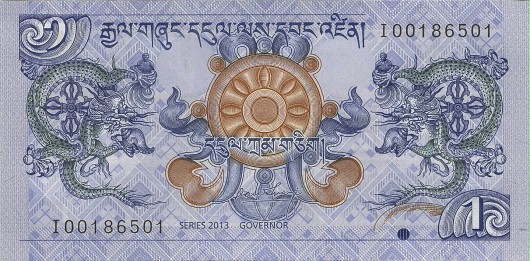
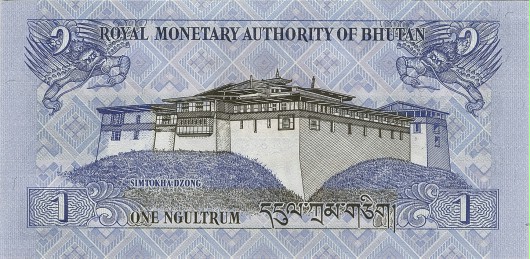
 From the
From the  An article on
An article on 
 The Central Bank of Peru (
The Central Bank of Peru (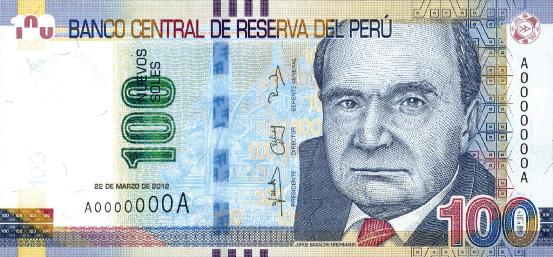
 An article on
An article on 